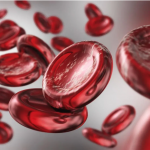
The vagina is one of the most important parts of the female body. However, when referring to the vagina, people usually refer to the outer part of the female genitalia- the vulva.[1] The vagina is indeed a complex structure, which is mostly the muscular canal made up of mucus membranes and nerves. On the other hand, the vulva comprises labia, clitoris, vaginal opening, and urethra.
The muscular gland of the vagina is responsible for connecting the uterus and cervix, thereby giving way to intercourse, childbirth, and menstruation.[2] The penis inserts itself into the vagina during sexual intercourse. The vagina is also referred to as the birth canal since the baby passes through it during childbirth.[3]
The vaginal opening also contains a thin membrane or tissue, the hymen. A rigorous physical activity or sexual intercourse can eventually lead to the breakdown of hymen.
Vaginal Anatomy and Function
Here is all that you need to know about this part of the human body.
Vaginal Opening
This is the first and most important part of the vagina, also referred to as introitus or vaginal vestibule. The vaginal opening is situated between anus and urethra. This is opening through which the menstrual blood flows out, and the child is born.
Vaginal Walls
As discussed earlier, the vaginal wall is made up of mucus membrane-covered muscles. The wall comprises different tissue layers made up of elastic fibers. The vaginal wall also has rugae that contain extra tissues.[4] These extra tissues further expand themselves during childbirth or sexual intercourse.
Based on your hormone cycle, the tissue on the vaginal walls undergo hormonal changes as well. The outermost layer of the vaginal wall tissue is responsible for storing glycogen, which is shed during the ovulation cycle. The glycogen breakdown is meant to keep the bacteria and fungus away and maintain the pH level of the vagina.
Hymen
The hymen surrounds the vaginal opening. Hymens are often round in shape, but they vary in size. Often women have half-moon shaped hymens too. The hymen is responsible for the proper flow of blood through the vagina.
If the hymen is still intact to the body, it may break or tear when someone has intercourse for the very first time. Nonetheless, this is not a test for virginity since rigorous physical activity, too, can pave the way for hymen tear.
Hymen shapes have an essential role to play in menstrual flow.[5] Some of the known hymen shapes hampering menstrual flow include the following.
Septate hymen: The septate hymen contains extra tissues that are responsible for forming two bands. Minor surgeries can, however, help to fix septate hymen.
Imperforate hymen: The imperforate hymen covers the entire vaginal opening, thereby interfering with the menstrual flow. Similar to the septate hymen, minor surgery can be helpful for treating imperforate hymen too.[6]
Micro Perforated hymen: Such a hymen contains tissues that cover almost most of the vaginal opening. Minor surgery can be helpful for treating micro perforated hymen.
Different Vaginal Conditions
The vagina is one of the most sensitive parts of the female body. Unprotected sex can give way to different vaginal conditions. However, an unbalanced pH level is responsible for vaginal conditions. Some of these are
Vaginitis: This is usually the vaginal yeast infection or the inflammation of the vagina due to the overgrowth of bacteria. One may experience pain during urination, swelling, burning, itching, and foul smell in this condition. Nonetheless, antifungal medicines can be of great help for treating these.
Genital Warts: This is one of the most common STIs affecting women. In this condition, the woman may suffer from bumps around the vagina. These bumps usually occur around vaginal opening, cervix, and vulva.[7] Caused by Human Papillomavirus, proper and regular treatment can help get rid of genital warts.
Herpes Simplex Virus: This is yet another common STD affected women. The herpes outbreak may lead to the appearance of blisters around the vaginal canal, vulva, and cervix. Herpes outbreak can be extremely uncomfortable and painful. Initially, herpes shows no symptoms, so it is tough to be detected. Medicines will only help to control herpes and not cure it.
Chlamydia: Chlamydia is one of the dangerous sexually transmitted diseases in women occurring due to the infection caused by Chlamydia Trachomatis bacteria. Not every woman will suffer from the symptoms of Chlamydia. The common symptoms of Chlamydia include abnormal vaginal discharge, pain around the abdomen, and vagina. Chlamydia, when left untreated, can lead to infertility and pelvic inflammatory disease. Regular doses of antibiotics can control and treat Chlamydia.[8]
Vaginal cancer: Vaginal cancer is a sporadic condition affecting only a handful of women. It may show symptoms like any other vaginal disease such as abnormal discharge and foul smell. It is better to get yourself tested than assuming what condition it would be.
Bacterial vaginosis: Excessive douching may lead to disruption in healthy pH levels of the vagina. This further causes painful sex, foul odor, and abnormal discharge from the vagina. You should avoid having unsafe sex with a new partner or for the first time.[9] Antibiotics can further treat bacterial vaginosis.
Gonorrhea: This sexually transmitted disease affects the cervix the most. Like Chlamydia, gonorrhea doesn’t show symptoms too, which is why it is hard to detect. It would show symptoms like any other vaginal disease such as itching and discharge. Similar to Chlamydia, it leads to infertility too. Antibiotics can help to treat gonorrhea.[10]

How to take care of vaginal health?
Here are a few tips that can help you:
- You need to refrain from douching as a vagina can maintain its hygiene by cleansing itself.
- Avoid using soaps and fragrant substances around the vagina.
- Visit a gynecologist regularly for a vaginal health checkup.
- Avoid unprotected sex.
- Get a vaccination against HPV and Hepatitis B.
[1] https://www.ncbi.nlm.nih.gov/books/NBK545147/
[2] KRANTZ KE. The gross and microscopic anatomy of the human vagina. Ann. N. Y. Acad. Sci. 1959 Nov 18;83:89-104. [PubMed]
[3] WELLS LJ. Embryology and anatomy of the vagina. Ann. N. Y. Acad. Sci. 1959 Nov 18;83:80-8. [PubMed]
[4] https://www.ncbi.nlm.nih.gov/pubmed/7501345
[5] https://www.ncbi.nlm.nih.gov/pubmed/7742499
[6] https://www.ncbi.nlm.nih.gov/pmc/articles/PMC3248621/
[7] Roach MK, Andreotti RF. The Normal Female Pelvis. Clin Obstet Gynecol. 2017 Mar;60(1):3-10. [PubMed]
[8] https://www.ncbi.nlm.nih.gov/books/NBK538435/
[9] Anderson D. Pudendal nerve block for vaginal birth. J Midwifery Womens Health. 2014 Nov-Dec;59(6):651-9. [PubMed]

